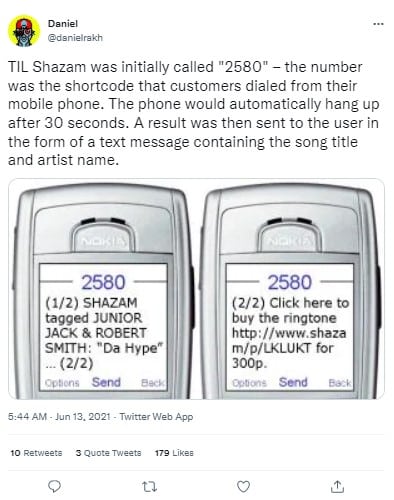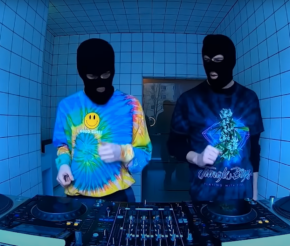- Advertise
-
Subscribe
Shazam Turns 20: How The Music Finder App Became a Pop Culture Staple

Our beloved music-searching app Shazam turned 20 this week (this is your cue to feel old), marking two decades of shifting the way we find and discover tunes. To celebrate, parent company Apple released figures from its archive to summarise Shazam’s major-league moments and touching milestones.
The mainstay music finder might not have blown birthday candles, but it celebrated its two-decade history with two record-breaking stats. Shazam can now pride itself on tracking down 70 billion songs while being the go-to music finger for 225 million global monthly users.
But way before ‘to Shazam’ became a pop culture verb and people held the pulsating circular emblem up in the air whenever they wanted to dig up a mystery track, the Apple-owned giant tech was a text-based service.
When it first saw daylight back in August 2002, there were no smartphones, no music apps and no search engines where you could type the song’s lyrics and wait for a miracle.
Down Shazam’s memory lane
As the brainchild of two university students, Chris Barton and Philip Inghelbrecht, Shazam first launched as a UK-based text message service. Instead of tapping on the logo like we do today, users had to dial “2580” on their phone and hold it up as the song played. An SMS message revealing the song and artist would soon after pop up in their notifications.
Fast forward to 2008, Shazam made its grand debut on App Store, the same year Apple’s software marketplace launched.

Just one year later, the free music-searching app reached the ten million downloads milestone.
With users from over 150 countries and across 350 mobile operators, Shazam was swiftly becoming a staple app on music devotees’ smartphones. After ranking as App Store’s fourth most downloaded free app of all time in 2011, the iPhone maker acquired Shazam in 2018 for $400 million.
Since then, the music finder has become a lucrative tool to identify listening and discovery habits, while finding answers for every unspoken ‘what’s the name of this song?’.
A cultural music staple
With an abiding commitment to track down songs with impressive accuracy, Shazam constantly kept its finger on music’s pulse. The app morphed into a barometer for unexpected pop culture moments.

Take Kate Bush’s Running Up That Hill as an example.
After getting featured in Netflix’s Stranger Things series, the track cherished an all-time peak.
This translated into a 1985 song taking over the first position on Shazam’s global top for ten days. It reached the highest ranks on 25 national charts – more than any song in 2022.
Tech titan Apple also hailed the app’s role in lending a head to artists who want to break through the ceiling. Shazam’s longest-running-chart-topped in 2021 was the Love Nwantiti remix released by Nigerian artist CKay.
But there are bigger figures to bandy about, too. Here’s a list of Shazam’s most notable firsts and red-letter days.
- First-ever Shazam song – Jeepster by T. Rex
- First track to reach 1,000 Shazams – Cleanin’ Out My Closet by Eminem in 2002
- First song to reach one million Shazams – TiK ToK by Ke$ha in 2010
- First track to reach ten million Shazams – Somebody That I Used to Know by Gotye and Kimbra in 2012
- Fastest track to reach 1 million Shazams – Butter by BTS in nine days
- Most Shazamed song ever – Dance Monkey by Tones And I with over 41 million Shazams
- Most Shazamed artist of all time – Drake, with over 350 million Shazams of songs he led or featured on
- Most Shazamed track during the app’s “2580” days – Crazy by Gnarls Barkley
- First artist to hit one million Shazams – Lil Wayne in 2009
- Most Shazamed Hip-Hop song – Can’t Hold Us by Macklemore and Ryan Lewis feat. Ray Dalton
- Most Shazamed dance song – Prayer In C (Robin Schulz Radio Edit) by Lilly Wood & The Prick and Robin Schulz
- Most Shazamed R&B/soul song – All of Me by John Legend
- Most Shazamed latin song – Mi Gente by J Balvin and Willy William
- Most Shazamed pop song – Let Her Go by Passenger






